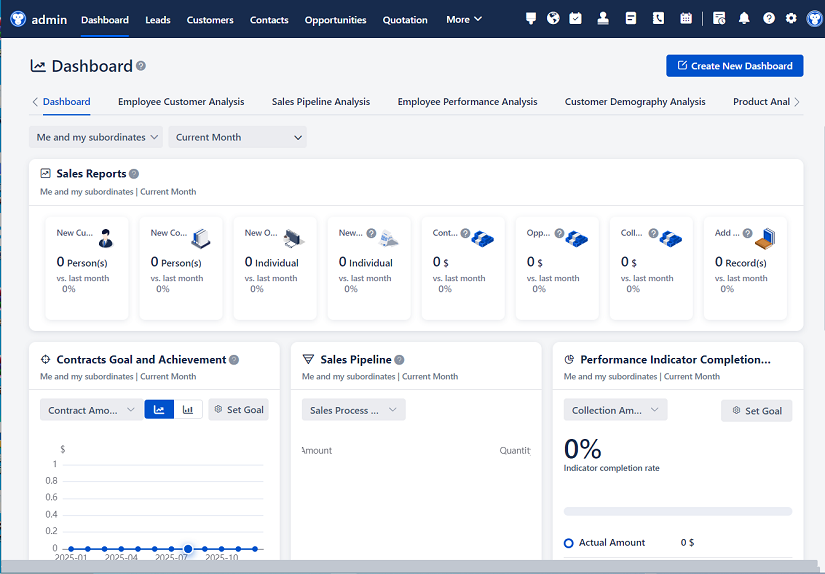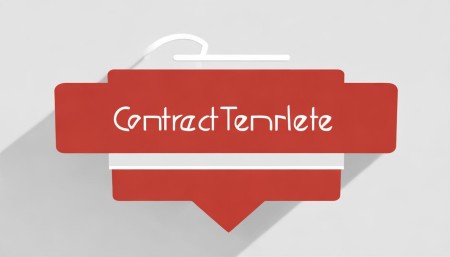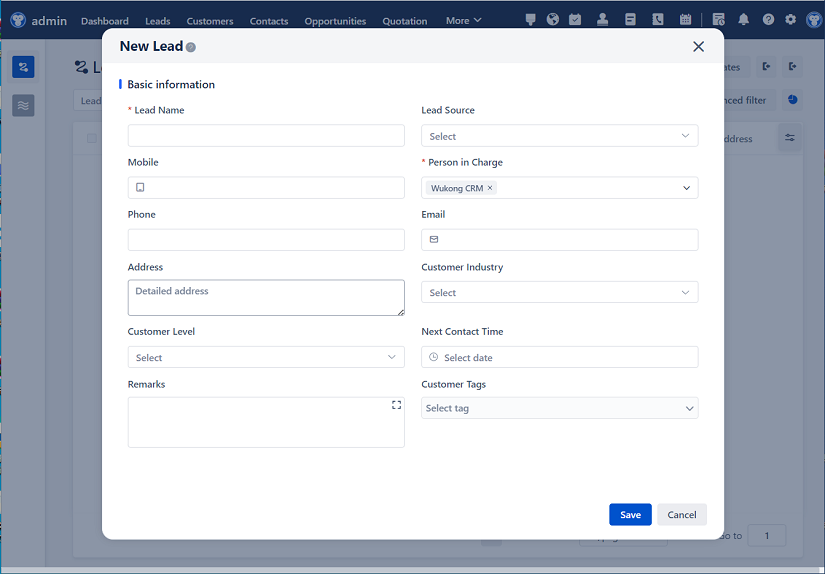
△Click on the top right corner to try Wukong CRM for free
You know, I’ve been thinking a lot lately about how businesses manage their customer relationships and contracts. It’s kind of wild when you really stop to consider it—so much of what keeps a company running smoothly comes down to two things: keeping customers happy and making sure every agreement is clear, tracked, and followed through on. That’s why I’ve become really interested in CRM systems that are integrated with contract management functionality. Honestly, it feels like one of those game-changing tools that people don’t talk about enough.
Let me tell you something—I used to work at a mid-sized software company where we had separate systems for managing customer data and handling contracts. Our sales team used the CRM to track leads and interactions, but as soon as a deal was close to closing, everything got messy. Contracts were stored in shared drives, emails flew back and forth, and more than once, someone signed an outdated version of an agreement. It was frustrating, inefficient, and honestly, kind of embarrassing.
Then, one day, our operations manager introduced us to a new CRM platform that had built-in contract management features. At first, I wasn’t too excited—I mean, how different could it really be? But within a week, I started seeing the difference. Everything was in one place. Customer profiles included active contracts, renewal dates, key terms, even clauses related to service levels or pricing. No more digging through email threads or asking legal to resend documents.
And here’s the thing—it wasn’t just about convenience. Having contracts tied directly into the CRM actually improved how we served our clients. For example, if a customer called with a question about their service limits, the support agent could pull up the exact contract clause right there in the system. No delays, no confusion. It made us look way more professional, and honestly, it made the customers feel valued because we weren’t fumbling around trying to find answers.
I remember one time, a client was considering renewing their contract, but they were hesitant because they felt the pricing didn’t reflect their usage anymore. Because the CRM showed not only the current contract but also historical usage data and past communications, our account manager was able to prepare a personalized proposal in under an hour. The client was impressed by how quickly we responded and how well we understood their needs. They renewed—and even expanded their services. That wouldn’t have happened if we were still juggling spreadsheets and PDFs.

Another big win? Renewal tracking. Before, we’d often miss renewal deadlines or send reminders too late. Now, the system automatically flags upcoming renewals—say, 60 days out—and assigns tasks to the right people. Some platforms even let you set escalation rules so that if a renewal isn’t addressed, it gets bumped up to a manager. It’s like having a smart assistant who never forgets a date.
Oh, and approvals! Let me tell you, getting contracts approved used to be a nightmare. You’d send a draft to legal, then wait… and wait… sometimes days would go by with no response. With the integrated workflow tools, we set up automated approval chains. As soon as a sales rep creates a contract in the CRM, it automatically routes to legal, finance, and whoever else needs to sign off. Everyone gets notified, and there’s a clear audit trail. No more “I thought you signed it” or “I never saw it.” It’s transparent, fast, and way less stressful.
One thing I really appreciate is how these systems help with compliance. Depending on your industry, you might have to follow strict regulations about data handling, contract storage, or disclosure requirements. When contracts live inside the CRM with proper access controls and version history, it’s easier to prove compliance during audits. Plus, if a contract gets updated, the old version is archived, so there’s no confusion about what was agreed upon when.
And speaking of versions—ugh, version control used to drive me crazy. I can’t count how many times I opened a document labeled “Final_v3_REALLYFINAL.docx” and still wasn’t sure if it was the right one. Now, every change is logged, every edit is timestamped, and only authorized users can make updates. It’s peace of mind, really.
But it’s not just about avoiding mistakes. This integration actually helps teams collaborate better. Sales, legal, finance, customer success—they’re all working from the same source of truth. If legal adds a new clause about liability, sales sees it immediately. If finance updates payment terms, customer success knows before the next invoice goes out. It breaks down silos and makes the whole organization feel more connected.
I’ll admit, though—switching to an integrated system wasn’t seamless at first. There was a learning curve. Some people resisted change, especially older team members who were used to doing things “the old way.” We had to invest time in training and make sure everyone understood the benefits. But once they saw how much time it saved and how much smoother deals closed, most people came around.
Another challenge was choosing the right platform. Not all CRMs offer strong contract management features. Some are basic—just letting you attach a PDF. Others have full lifecycle management: drafting, redlining, e-signatures, renewals, analytics. We ended up going with a solution that supports templates, conditional logic (so contracts auto-fill based on customer type), and integrates with e-signature tools like DocuSign. It was worth the extra cost.
And guess what? It even helps with forecasting. Because the CRM knows which contracts are up for renewal, which ones include upsell opportunities, and which clients have pending negotiations, sales leaders can build much more accurate revenue projections. It’s not just gut feeling anymore—it’s data-driven planning.
I’ve also noticed that customer satisfaction has gone up since we made the switch. Part of it is faster response times, sure, but it’s also about consistency. Customers hate it when different people in a company give them conflicting information. When everyone accesses the same contract details, there’s less room for error. Trust builds over time when you get the little things right.

Now, I’m not saying this integration solves every problem. It won’t fix a bad sales process or compensate for poor customer service. But it removes friction. It gives teams the tools they need to do their jobs efficiently and accurately. And in today’s competitive market, that kind of operational advantage matters more than ever.

Another cool feature? Analytics and reporting. We can now generate reports on contract performance—like average negotiation time, most common amendments, renewal rates by region. That kind of insight helps us refine our processes and train our teams more effectively. For example, we found that certain product lines had unusually high amendment rates, which led us to revise our standard templates. Small change, big impact.
And let’s talk about scalability. When we were smaller, managing contracts manually was kind of manageable. But as we grew—more clients, more complex deals—it became unsustainable. The integrated CRM scales with the business. Whether you’re closing 10 deals a month or 100, the system handles it without breaking a sweat.
Security is another big plus. These platforms usually come with enterprise-grade encryption, role-based access, and compliance certifications like SOC 2 or GDPR readiness. That’s important when you’re dealing with sensitive client agreements. You don’t want contracts floating around in personal email accounts or unsecured cloud folders.
Honestly, I think every growing business should consider this kind of integration. It’s not just for big corporations anymore. Even small teams can benefit from having customer data and contracts in sync. The ROI becomes clear pretty quickly—fewer errors, faster deal cycles, better customer retention.
Looking back, I wish we’d made the move sooner. All those hours wasted chasing documents, clarifying terms, fixing avoidable mistakes—they add up. Now, we spend that time building relationships, solving real problems, and growing the business. That’s what technology should do: free us up to focus on what really matters.
So yeah, if you’re still using separate tools for CRM and contracts, I’d encourage you to take a close look at integrated solutions. Talk to vendors, ask for demos, involve your team in the decision. It might seem like a big step, but trust me—it’s one of those changes you’ll wonder how you ever lived without.
FAQs (Frequently Asked Questions):
Q: What exactly does “CRM integrated with contract management” mean?
A: It means your customer relationship management system includes tools to create, store, track, approve, and renew contracts—all within the same platform where you manage customer interactions.
Q: Can I still use my existing e-signature tool?
A: Most modern integrated CRMs support integrations with popular e-signature platforms like DocuSign, Adobe Sign, or HelloSign, so yes—you can keep what you’re already using.
Q: Is this only useful for large companies?
A: Not at all. Even small or mid-sized businesses benefit from reducing manual work and avoiding costly contract errors. The efficiency gains often matter even more when resources are tight.
Q: How long does it take to implement such a system?
A: It depends on the platform and your setup, but many companies go live within 4–8 weeks, especially if they’re replacing outdated processes.
Q: Will my team resist switching to a new system?
A: Some resistance is normal with any change, but showing clear benefits—like less admin work and fewer last-minute fires—usually wins people over. Training and leadership support help a lot.
Q: Can I customize contract templates in the CRM?
A: Yes, most systems allow you to create and manage custom templates with placeholders, conditional fields, and approval workflows tailored to your business needs.

Q: What happens if a contract needs to be amended?
A: The system tracks revisions, maintains version history, and ensures all stakeholders are notified. You can compare changes side-by-side and route updates for approval seamlessly.
Q: Does this integration improve customer experience?
A: Absolutely. Faster responses, consistent information, and smoother renewals all contribute to higher customer satisfaction and stronger relationships.
Q: Are these systems expensive?
A: Pricing varies, but many offer tiered plans based on features and users. When you factor in time saved and risk reduced, the investment often pays for itself quickly.
Q: Can I access contracts on mobile devices?
A: Yes, most integrated CRM platforms have mobile apps that let you view, edit, and approve contracts from anywhere—great for remote teams or on-the-go approvals.
Related links:
Free trial of CRM
Understand CRM software
AI CRM Systems

△Click on the top right corner to try Wukong CRM for free